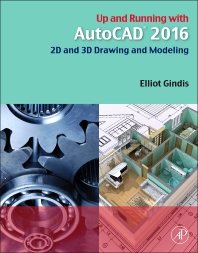Books in Computer science
Books in Computer science
The Computing collection presents a range of foundational and applied content across computer and data science, including fields such as Artificial Intelligence; Computational Modelling; Computer Networks, Computer Organization & Architecture, Computer Vision & Pattern Recognition, Data Management; Embedded Systems & Computer Engineering; HCI/User Interface Design; Information Security; Machine Learning; Network Security; Software Engineering.
- 1st Edition
- July 17, 2015
- Angela Jones + 1 more
- English
- Paperback9 7 8 0 0 8 1 0 0 0 6 7 0
- eBook9 7 8 0 0 8 1 0 0 0 7 0 0

The Digital Evolution of Live Music
- 1st Edition
- July 13, 2015
- Maciej Pietrzyk + 3 more
- English
- Hardback9 7 8 0 1 2 4 1 6 7 0 7 0
- eBook9 7 8 0 1 2 4 1 6 7 2 4 7

Computational Materials Engineering
- 1st Edition
- July 11, 2015
- Elliot J. Gindis
- English
- Paperback9 7 8 0 1 2 8 0 3 5 7 2 6
- eBook9 7 8 0 1 2 8 0 3 5 7 3 3

Up and Running with AutoCAD 2016
- 1st Edition
- July 6, 2015
- Aaron Wheeler + 1 more
- English
- Paperback9 7 8 0 1 2 8 0 2 9 3 0 5
- eBook9 7 8 0 1 2 8 0 2 9 3 1 2

Cloud Storage Security
- 1st Edition
- Volume 98
- June 17, 2015
- English
- Hardback9 7 8 0 1 2 8 0 2 1 3 2 3
- eBook9 7 8 0 1 2 8 0 2 3 4 0 2

Advances in Computers
- 2nd Edition
- June 15, 2015
- Joseph Yiu
- English
- Paperback9 7 8 0 1 2 8 0 3 2 7 7 0
- eBook9 7 8 0 1 2 8 0 3 2 7 8 7

The Definitive Guide to ARM® Cortex®-M0 and Cortex-M0+ Processors
- 1st Edition
- June 10, 2015
- Chet Hosmer
- English
- Paperback9 7 8 0 1 2 8 0 2 7 2 1 9
- eBook9 7 8 0 1 2 8 0 2 7 4 2 4

Python Passive Network Mapping
- 1st Edition
- June 3, 2015
- Jonathan Lazar + 2 more
- English
- Paperback9 7 8 0 1 2 8 0 0 6 4 6 7
- eBook9 7 8 0 1 2 8 0 0 7 1 0 5

Ensuring Digital Accessibility through Process and Policy
- 1st Edition
- Volume 50-2
- June 2, 2015
- Maria Overstreet
- English
- Hardback9 7 8 0 3 2 3 3 8 8 9 6 2
- eBook9 7 8 0 3 2 3 3 8 8 9 7 9

How Nursing has Changed with Technology, An Issue of Nursing Clinics
- 1st Edition
- June 1, 2015
- Raymond Choo + 1 more
- English
- Paperback9 7 8 0 1 2 8 0 1 5 9 5 7
- eBook9 7 8 0 1 2 8 0 1 7 8 0 7

The Cloud Security Ecosystem